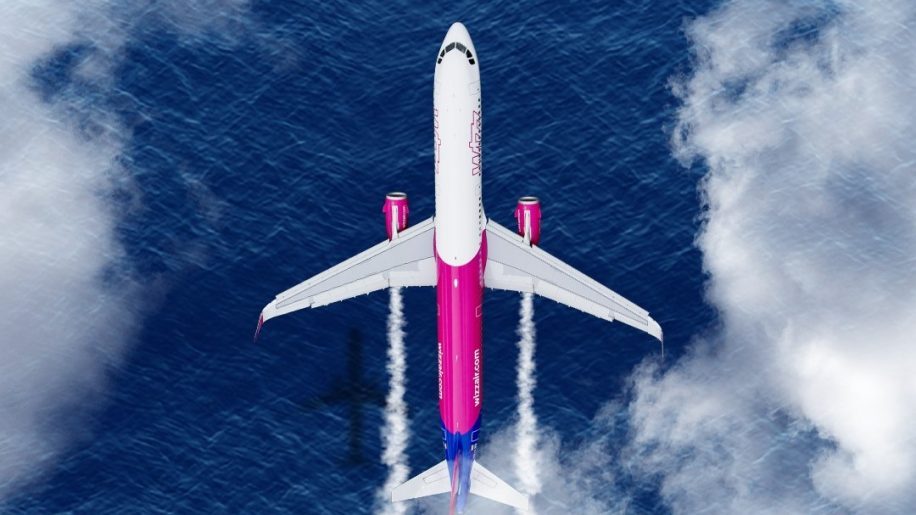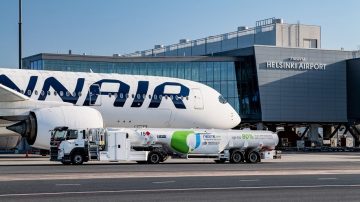
Aviation currently makes up around 2-3 per cent of global CO2 emissions. This is forecast to rise and probably does not reflect the true damage done. CORSIA is one way airlines are seeking to offset their emissions, and also deflect some of the criticism which will come their way once aviation returns and begins to grow.
What is CORSIA?
CORSIA is an acronym for the Carbon Offsetting and Reduction Scheme for International Aviation. It is a market-based solution which airlines are using as a first step towards becoming net zero by 2050. It will run from this year, 2021, until 2035.
Many countries have made commitments to reduce their carbon emissions under the United Nations Framework Convention on Climate Change (UNFCCC), but international aviation fell outside this framework since it is not strictly nationally-determined in the ways other commitments are (so while domestic aviation falls within the UNFCC, international does not).
At one point. there was talk of aviation being included in the EU Emissions Trading Scheme (ETS) for all flights, but in the end this was limited to intra-European flights. (This was partly because of the objections of foreign carriers.) Instead, the International Civil Aviation Organisation (ICAO) created the CORSIA framework as a way of addressing the issue. Aviation emissions under CORSIA are likely to be implemented by the EU, and the UK government is currently consulting on how to implement CORSIA alongside a UK ETS.
You can read more about the background to this in some of our older pieces:
Worldwide, flights produced 915 million tonnes of CO2 in 2019. At present the price of offsetting one tonne of CO2 ranges depending on the quality of the offset and whether – and who by – it is accredited. At the moment (2022) the price for a carbon offset is $3-5 per metric tonne of CO2, though estimates say this may rise as high as $90 by 2050.
Airlines and climate change
Airlines do not deny climate change, or their part in it. Setting aside the important work they do on other areas of sustainability (use of plastics, recycling etc…) their environmental strategies are based on the following:
- Increased efficiency – new, more fuel efficient aircraft, air traffic control, reduced taxiing and infrastructure improvements (ie: what happens on the ground)
- Increased cooperation with rail and other land transport
- Encouraging the development and use of viable alternative fuels – SAF – see Sustainable aviation: Fuelling change for more details
- Offsetting emissions
- Hoping that hydrogen-powered aircraft come along before 2050
CORSIA falls under no. 4, and it aims to help airlines achieve their stated aim of a 50 per cent reduction in “…net aviation CO2 emissions by 2050, relative to 2005 levels.”
It is important to understand that the current aims encompass only CO2 and there are other harmful gases produced by aviation.
How are emissions calculated?
CORSIA was devised by ICAO to take as a baseline the emissions that airlines recorded in 2019, and says that if airlines exceed these emissions, then they have to buy carbon offsets amounting to the amount they overshoot that baseline. The idea is that this incentivises airlines towards greater efficiencies and also will direct money into offset schemes.
Originally the baseline was going to be calculated from two years – 2019 and 2020, but the pandemic meant that airlines flew far less in 2020. An average of their emissions over those two years would have been much lower as a result, meaning as they began to increase their flying as the world recovers and opens up, the airlines would have had to pay for a lot more offsets. Not surprisingly they objected to that, and now are using 2019 only as a baseline, although recently this was set at 85 per cent of those 2019 emissions.
Environmental organisations criticise airlines over emissions recalculation
Which airlines are in CORSIA?
Quite a few, but not all. Currently, 88 states, representing over 77 per cent of international aviation activity, have agreed to participate voluntarily in the first phases of CORSIA. The Gulf carriers are involved. Emirates, for instance, said in its 2021-21 Annual Report that it had “…completed its first audited annual emissions report for CORSIA, covering all of its international emissions for the year 2019, and at the end of this financial year was finalising the audited report for 2020”.
Meanwhile, Qatar Airways became the first airline to make a transaction on the IATA Aviation Carbon Exchange (ACE) using IATA Clearing House (ICH).
India, however, is not involved in CORSIA, and says it is moving ahead with its own programme in accordance with its National Defined Contributions (NDCs). For more of what that means, see this page from the United Nations Climate Change website.
A big question is whether China will join. A clue might be found in the Cathay Pacific Group in its Sustainable Development Report 2020 where it said “Although China has not indicated its participation in the voluntary phase, we are nonetheless ready to fulfil all the reporting requirements and have conducted internal assessment to understand CORSIA’s impact on us once China participate(s) in the scheme.”
How does it work?
There are three phases, two of which are voluntary, and the third which is mandatory. The voluntary phase starts this year (2021) and lasts until 2023. It only applies to international flights between states that have volunteered to take part, but requires those airlines participating to buy offsets at the end of the three year phase (in fact, by January 2025).
The amount of offsets aren’t calculated on the airline’s emissions, but rather proportionally calculated on the growth of emissions of the whole industry above the 2019 baseline.
CORSIA offsets – How do they work?
CORSIA has been criticised by many, most recently in a study commissioned by the EU.
Airline carbon offset scheme is the worst option for reducing aviation’s emissions – EU analysis
Where do the carbon credits come from?
Good question. the validity of carbon credits is very important, and the subject of vigorous debate, and not just for aviation.
ICAO approves certain organisations to verify carbon credits for CORSIA. You can see an example of this (from March 2021) here.
They include the American Carbon Registry, China GHG Voluntary Emission Reduction Program, Clean Development Mechanism, Climate Action Reserve, The Gold Standard and Verified Carbon Standard.
More information
We will keep updating this, but if you have any questons please put them in the comments section at the bottom.
A recent research paper looked at the whole question of CORSIA, aviation taxes and the Green Recovery post-Covid, see this from May 2021: Options for regulating the climate impacts of aviation
…. and for those reading who are interested on the question of whether Brexit made any difference to UK airlines, see this guidance from the UK government.












